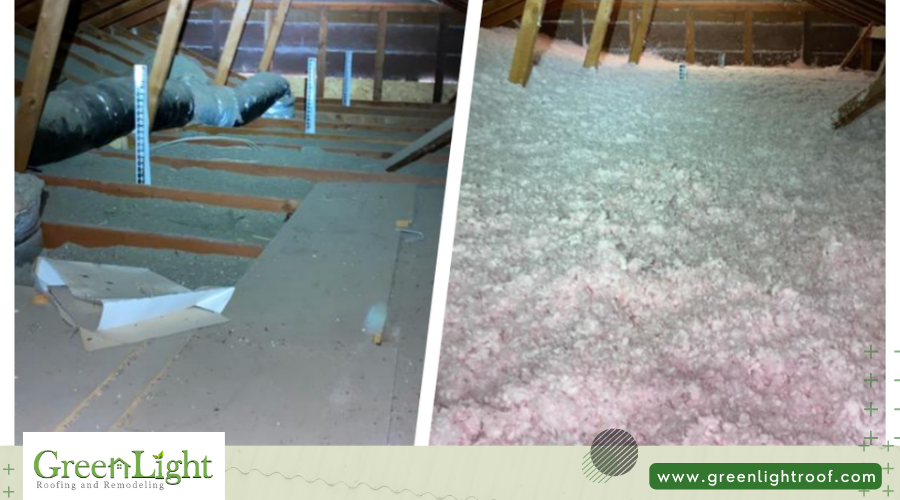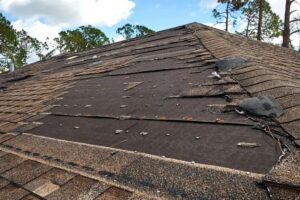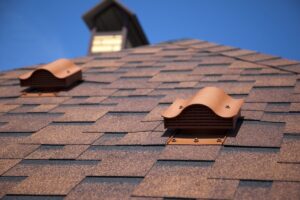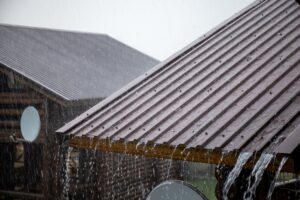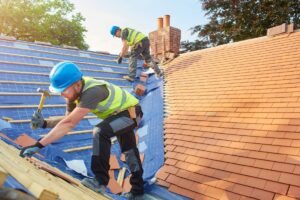Imagine you’re in your home during the winter, and no matter how much you crank up the heat, you can’t seem to get warm. You’re layering on clothes, drinking hot cocoa, and even cuddling under blankets, but still, the chill persists. What’s the problem? Your attic insulation might be the culprit.
Attic insulation plays a significant role in keeping your home comfortable and energy-efficient. It can save you money in the long run by reducing your energy bills. How does it work? Let’s dive into the details.
What is Attic Insulation?
Attic insulation is a material that is installed in the attic space of your home. Its primary function is to create a barrier between the outside elements and your home’s interior, keeping warm air inside during the winter and outside during the summer. Without proper insulation, your home can become drafty, leading to uncomfortable temperatures and higher energy bills.
There are several types of attic insulation, including fiberglass, cellulose, and spray foam. Each has its unique properties and benefits. Fiberglass insulation is the most common type, made of small glass fibers that trap air and provide insulation. Cellulose insulation is made of recycled paper products and is environmentally friendly. Spray foam insulation is the most effective at sealing gaps and cracks, but it’s also the most expensive.
The Benefits of Attic Insulation
Attic insulation is an important component of any home. It offers several benefits, including cost savings on energy bills, improved comfort, and a reduced environmental impact. During winter months, attic insulation helps to trap heat inside your home, reducing the need for your heating system to work harder to maintain a comfortable temperature. In the summer months, insulation keeps your home cool by preventing hot air from entering. Proper insulation provides an even temperature throughout your home, making it a cozy and pleasant living space.
- Lower Energy Bills
- Energy-efficient
- Improved Comfort
- Longer Lifespan for Your HVAC System
- Reduced Carbon Footprint
Attic insulation is a simple yet effective way to improve the comfort, energy efficiency, and environmental impact of your home. It can save you money, reduce your carbon footprint, and make your living space a more pleasant and healthy environment.
The Benefits of Attic Insulation Beyond Energy Savings
As mentioned earlier, investing in attic insulation can save you money on your energy bills by reducing the amount of heating and cooling required to maintain a comfortable temperature in your home. However, it can also help you save money in other ways.
Learn About the Tax Credit
Attic insulation not only helps you save money on your energy bills, but it can also make you eligible for a tax credit. The federal government offers a tax credit for homeowners who invest in energy-efficient upgrades, such as attic insulation. The tax credit, known as the Residential Energy Efficiency Tax Credit, allows homeowners to receive a credit of up to 10% of the cost of the insulation, up to a maximum of $500. This credit is available for insulation installed in 2021 and 2022.
To qualify for the tax credit, the insulation must meet certain requirements. It must be installed in an existing primary residence, and the insulation material must have a thermal resistance of R-13 or greater. The insulation must also be expected to last for at least five years and meet local building code requirements.
In addition to the federal tax credit, some states and local utilities offer additional incentives for homeowners who invest in energy-efficient upgrades, such as attic insulation. These incentives can include rebates, low-interest loans, or free energy audits. Investing in attic insulation not only helps you save money on your energy bills but also offers the added benefit of potentially qualifying for a tax credit or other incentives.
Discover the Benefits of Rebates
Insulating your attic can be a smart investment for your home, not only for the energy savings it provides but also because it can help you get money back through rebates. Many local utilities and state programs offer rebates to homeowners who invest in energy-efficient upgrades, including attic insulation.
Rebates can range from a few hundred dollars to over a thousand dollars, depending on the program and the level of insulation installed. Some programs may also offer free energy audits or other incentives to encourage homeowners to invest in energy-efficient upgrades.
To qualify for these rebates, the attic insulation must meet certain requirements. The insulation material must have a thermal resistance of R-38 or greater, and it must be installed by a licensed professional. The insulation must also meet local building code requirements. Investing in attic insulation not only helps you save money on your energy bills but also offers the added benefit of potentially qualifying for a rebate or other incentives
How Attic Insulation Can Provide a High ROI
If you’re looking for a cost-effective way to increase the value of your home, investing in attic insulation could be a smart move. Not only does it offer significant energy savings, but it can also provide a high return on investment or ROI.
Attic insulation helps to keep your home warm in the winter and cool in the summer by preventing heat from escaping through the roof. This means that your heating and cooling systems don’t have to work as hard to maintain a comfortable temperature, resulting in lower energy bills.
But beyond the energy savings, adding attic insulation can also boost your home’s value. According to a report by Remodeling Magazine, the average ROI for attic insulation is around 107%. This means that for every dollar you spend on attic insulation, you can expect to recoup more than a dollar in increased home value. In addition, proper attic insulation can make your home more attractive to potential buyers. Buyers are often interested in energy-efficient homes that are more affordable to maintain, and proper insulation is a key component of energy efficiency.
Other Ways to Save Energy and Money at Home
Other Ways to Save Energy and Money at Home
While attic insulation is a great way to save money on your energy bills, there are other steps you can take to reduce your energy consumption and lower your utility costs.
Install a Programmable Thermostat
One of the easiest and most effective ways to save money on your energy bills is to install a programmable thermostat. These thermostats allow you to set different temperature settings for different times of the day, so you can automatically adjust your heating and cooling based on when you’re home and when you’re away. By using a programmable thermostat, you can save up to 10% on your energy bills each year.
Seal Air Leaks
Air leaks can allow cold air to enter your home in the winter and hot air to enter in the summer, making your heating and cooling systems work harder to maintain a comfortable temperature. By sealing these leaks, you can reduce your energy consumption and save money on your utility bills.
Some common places to check for air leaks include windows, doors, and electrical outlets. You can seal these areas with weatherstripping or caulk to prevent air from escaping.
Upgrade to Energy-Efficient Appliances
If you’re in the market for new appliances, consider investing in energy-efficient models. These appliances use less energy than traditional models, which can lead to significant savings on your energy bills over time.
Look for appliances with the ENERGY STAR label, which indicates that the appliance meets strict energy efficiency guidelines set by the U.S. Environmental Protection Agency.
Use Energy-Efficient Light Bulbs
Another simple way to save energy and money is to replace your traditional incandescent light bulbs with energy-efficient options like LEDs or CFLs. These bulbs use less energy and last longer than traditional bulbs, which can lead to significant savings on your energy bills over time.
Conclusion
By investing in attic insulation and making other energy-saving improvements to your home, you can save money on your energy bills while also reducing your impact on the environment. Remember to consult with a professional attic insulation contractor to ensure that your insulation is installed correctly and meets the recommended standards. And don’t forget to take advantage of other energy-saving opportunities throughout your home to maximize your savings.

